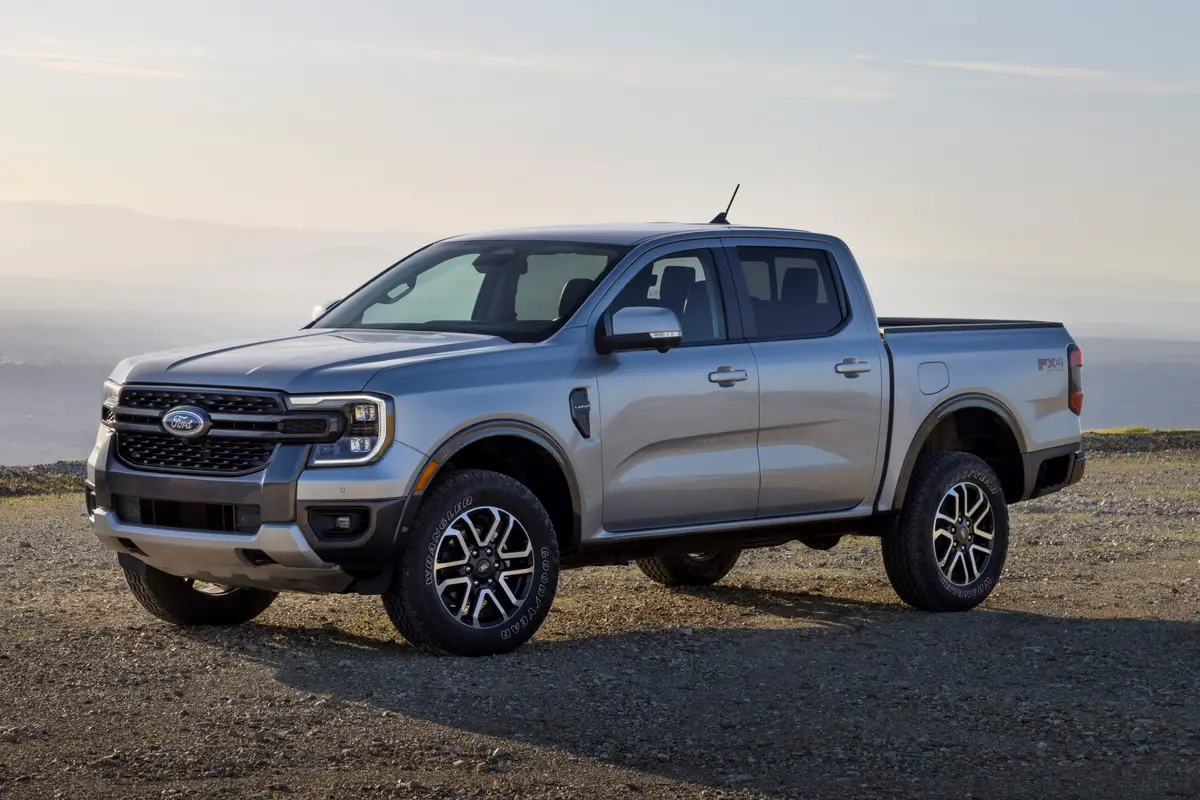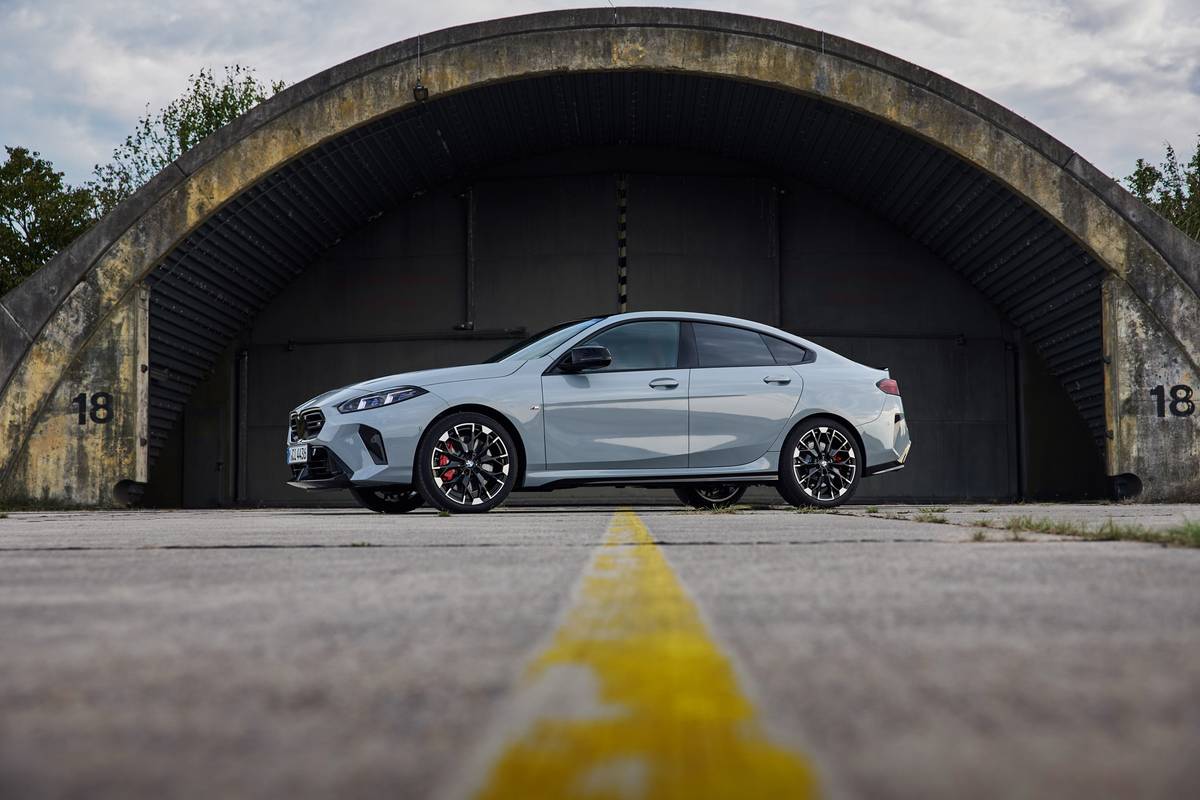Our view: 2006 Lexus IS 350









































































After a five-year run in its original form, Lexus’ IS 300 entry-level sport sedan has been overhauled for the 2006 model year and will go on sale in October. Now available with 2.5-liter or 3.5-liter V-6 engines — in the IS 250 and IS 350 — the car is closer than ever to the BMW 3 Series in size and performance. All-wheel drive is an option for the first time.
The IS 300’s smaller size and younger image may have held it back in the market. The new model is a few inches larger in all dimensions, and its styling is more mature, inside and outside. The car is rear-wheel drive to meet the performance requirement, with all-wheel drive available only on the IS 250 with a six-speed-automatic transmission. The standard transmission is a six-speed manual, though the IS 350 comes only as an automatic.
Even with six gear ratios to work with, the IS 250’s acceleration is modest. Lexus cites 0-to-60-mph times of 7.9 seconds with rear-wheel drive and 8.3 seconds with all-wheel drive. This seems about right. As reflected in the table, both engines hit their torque peak more than halfway up the engine-speed range, so the IS 250 doesn’t launch as quickly as I’d hoped. The 2005 IS 300 had only slightly more power but significantly more torque, with a peak at a lower 3,800 rpm.
| New and Old Engines Compared | |||||||||||||||||||
|---|---|---|---|---|---|---|---|---|---|---|---|---|---|---|---|---|---|---|---|
| 2006 IS 250 | 2006 IS 350 | 2005 IS 300 | |||||||||||||||||
| Engine Type | 2.5-liter V-6 | 3.5-liter V-6 | 3.0-liter inline-6 | ||||||||||||||||
| Horsepower | 204 @ 6,400 rpm | 306 @ 6,400 rpm | 215 @ 5,800 rpm | ||||||||||||||||
| Torque (lbs.-ft.) | 185 @ 4,800 rpm | 277 @ 4,800 rpm | 218 @ 3,800 rpm | ||||||||||||||||
| Redline | 6,600 rpm | 6,600 rpm | 6,600 rpm | ||||||||||||||||
| Required Fuel | premium unleaded (91 octane) |
premium unleaded (91 octane) |
premium unleaded (91 octane) |
||||||||||||||||
| Manufacturer data | |||||||||||||||||||
Conversely, the IS 350 gets a move-on at a tap of the accelerator and is substantially quicker: Lexus says 5.6 seconds to 60 mph. The automatic transfers power well: smoothly under moderate acceleration and without wasting power under heavy acceleration. The kickdown lag is acceptable. Both engines use by-wire throttles, which often introduces a delay in response. The IS has it too, but it’s only a fraction of a second, not nearly as bad as in some cars.
The automatic transmission includes a clutchless-manual mode that’s activated by sliding the gear selector into a sequential-shift gate. A forward bump of the lever triggers an upshift, and a rearward motion downshifts — the most intuitive approach and the opposite of BMW’s. There are also Formula One-style shift paddles on the steering wheel.
The disappointment, if you’re into this kind of shifting, is that the mode doesn’t lock the transmission in a gear. It simply locks out the gears above the one selected, just like the numbers in the old PRND321 shift pattern. Also found on many Mercedes-Benz and related Chrysler models, this execution misses the point. Transmission modes should be fully automatic or fully manual. Here it’s a non-feature.
As for fully manual, you still can’t beat the stick shift and clutch pedal. The standard issue is a leather-wrapped knob atop a medium-length, medium-throw stick that’s well within reach. Ahead of EPA estimates, Lexus predicts fuel economy:
| Lexus-Estimated Fuel Economy (mpg) | |||||||||||
|---|---|---|---|---|---|---|---|---|---|---|---|
| City/Highway | Combined | ||||||||||
| IS 250 Manual | 20/29 | 23 | |||||||||
| IS 250 Automatic | 24/32 | 27 | |||||||||
| IS 250 Automatic AWD | 22/28 | 25 | |||||||||
| IS 350 Automatic | 21/28 | 24 | |||||||||
| Lexus estimates based on EPA procedures | |||||||||||
While both models have four-wheel disc brakes with ABS, brake assist and electronic brake-force distribution, the IS 350 has larger discs and four- rather than two-piston front calipers. There’s no mistaking the difference. The 350 stops with greater authority, has better pedal feel and affords much finer modulation. The 250’s do the job, but after experiencing the 350’s, I didn’t want to go back.
Handling is where the two models are most alike. They exhibit the reflexes expected of a double-wishbone front and multilink rear suspension. I was particularly impressed with the roadholding of the standard Dunlop SP Sport 5000M 17-inch all-season tires, rated P225/45R17 in front and P245/45R17 in rear (tire codes). (All-wheel-drive models have the smaller tires on all four wheels.) The optional 18-inch Dunlop SP Sport Maxx summer performance tires, rated P225/40R18 in front and P255/40R18 in the rear, were grippier still. They come in the Performance Luxury Plus Package, along with sport suspension tuning and other features, on either model with rear-wheel drive.
Body roll is well controlled, as are nosedive during braking and rear-end squat upon acceleration. (I know squat technically is bad, but I sorta liked it in the old IS 300.) I’d have to get the cars on a track to know for sure, but I sensed more understeer than I expect from a rear-drive car in this class. Predictably, it was even more pronounced with the all-wheel drive. Even though the electronically controlled system sends as much as 70 percent of the torque to the rear wheels, the additional driveline hardware in the front throws the balance off. Lexus says the weight distribution is 52/48 percent (front/rear) with rear-wheel drive and 54/46 with all-wheel drive. The Infiniti G35 is rated 53/47, but it feels better balanced in actual use.
Lexus’ electric power steering gets the big thumbs-up for its natural feel. Were it not for the documentation, I probably wouldn’t have known it wasn’t the conventional power-robbing hydraulic type. The good news is that an electronic stability system is standard on the IS 250, and the more advanced Vehicle Dynamics Integrated Management (VDIM) is standard on the IS 350. Both allow a little wheelspin and drift before kicking in — appropriate for this type of car. VDIM is far less intrusive when it does so than are most such features. The bad news is that these electronic nannies can’t be turned off. I can just hear the backlash already.
Compared to the earlier generation, the cabin is more luxurious and sophisticated in design. The backseat has 0.8 inch less headroom and only 0.4 inch more legroom. It’s serviceable for a 6-foot passenger, but I’d hoped for a greater increase in size.
As of this evaluation, full feature information hasn’t come into the other sections of this report, so highlights include: adaptive xenon headlights that aim in the direction of the turn; a dual-chamber airbag that’s claimed to spread the impact on the front passenger, reducing the risk of airbag-induced injury; side-impact and knee airbags for the front occupants; and side curtain-type airbags that cover the side windows. See the pop-up photos for more feature details.
| Send Joe an email |

Former Executive Editor Joe Wiesenfelder, a Cars.com launch veteran, led the car evaluation effort. He owns a 1984 Mercedes 300D and a 2002 Mazda Miata SE.
Latest news



